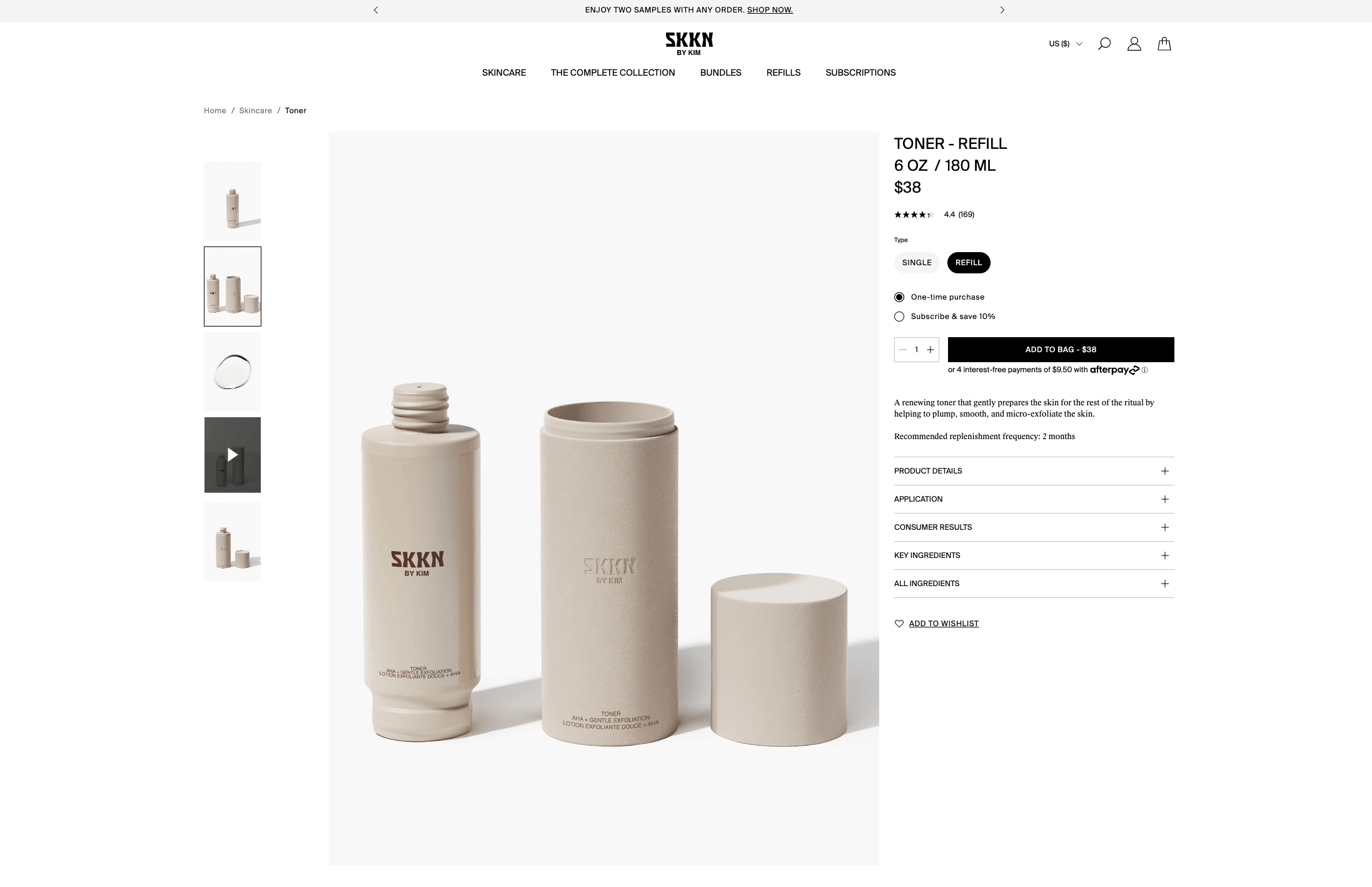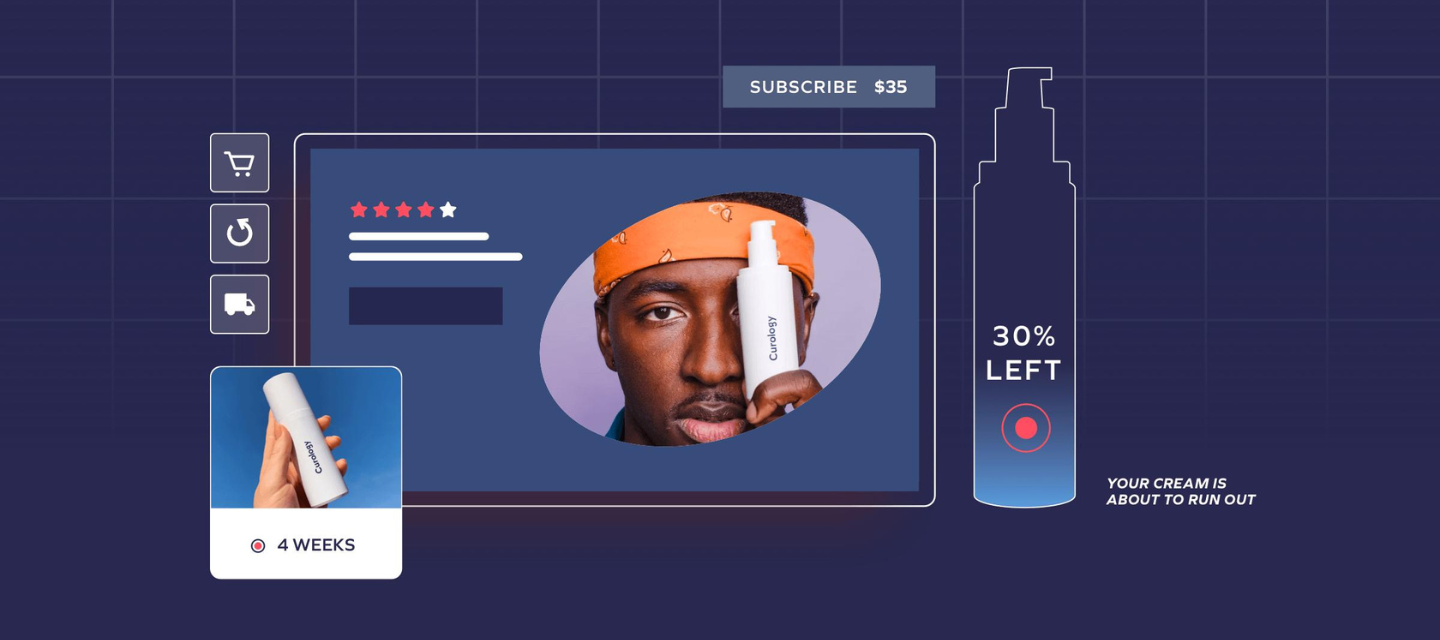75% of all DTC brands will offer subscriptions by next year. Think about the sheer number of eCommerce brands out there today and now let that sink in. Wild.
While the idea of subscriptions is nothing new, new platforms and improvements in existing technology have made it possible for all kinds of brands to get into the recurring revenue game.
More eCommerce brands mean more competition and it’s that competitiveness that’s going to challenge brands to create better subscription experiences. The reality is brands need to focus on building relationships with their customers to keep people happily subscribed for longer.
Let’s grab our crystal ball and try to peep at what this segment of the eCommerce industry will look like over the next five years.
Present day: competition for brands means better experiences for customers
Brands winning at subscriptions right now are not only offering a quality product, but they’re taking the entire customer experience into consideration. What you get at the end is a recurring shopping experience that makes customers feel seen.
Where current subscriptions are getting it right
There’s a lot of buzz about educating your customers post-purchase. If your goal is to focus on retention then you need to constantly be providing value to your customers. You can do that in many ways across many forums: education, freebies, events, etc.
Businesses finding success with subscription models are tapping into principles of the subscription economy that go much deeper than price. These successful brands know it’s not just about that first sale, it’s about building a relationship with a customer and they’re using every tool in their marketing arsenal.
So then, how can we take what brands are doing now and iterate on it, not only to beat out the competition but to strengthen the relationships with our customers? Great question, here’s where that crystal ball would come in handy.
Ring ring, the future is calling and here’s what we can see in the next year
After consulting the oracle here’s what we know… The logic of the subscription economy is expanding into new industries and it is likely we’ll see some unexpected practices emerge in the next few years. But what can we expect to see in the near future?
Access not ownership
With the climate crisis on many young consumers’ minds, it’s no surprise an access over ownership model could become a main driver in the subscription economy. 75% of adults believe that more people will begin subscribing to more services in the future as opposed to owning things.
Customers already find this model appealing, just look at brands like Rent the Runway. Their access models work not because people don’t want to own their clothes, but rather because they want more variety without having to pay full price.
Another place we’re starting to see the access subscription model pop up is renting your furniture over owning it. If you’re an urban dweller you’ve probably seen ads for these companies. You pay a subscription fee, choose your style and pieces, and then the company brings the furniture to your home. Gone are the days of waiting six months for a table to arrive, or bribing your friends to help you “PIVOT!” the couch up a narrow stairwell. You can see the appeal, can’t you?
The power of memberships and subscriptions
Giving customers the best experience possible will always be one of the most important things you do as a merchant. In the next year we can expect to see brands double down on experience and one of the ways they can do that is by creating a “membership” or “VIP club” to be used alongside their subscription program.
Brands will offer membership access with a subscription purchase. Through this membership, brands can take the VIP treatment a step further with exclusive offers, content, and products.
Catering to customization
A personalized approach will be the key to success in the future and we’re already seeing evidence of that now, no tea leaves necessary. According to McKinsey, 28% of subscribers state a personalized experience is essential to stay subscribed. In the next year, we can expect to see even more personalized approaches to subscriptions.
Imagine a subscription world where it’s commonplace for packaging to include QR codes that lead to personalized videos for product use. Maybe customers have just received a box with the latest in camping gear, and you’ve embedded content into your packaging that will explain how everything works. Taking that a step further, maybe you’re a skincare line specializing in custom solutions and your customer’s first subscription order comes with a consultation or a personalized video explaining the benefits and how to use their new products.
But it doesn’t stop there. These personalized moments will be woven into the entire subscription experience. Think personalized SMS messages specific to subscribers and the products they purchase from you. Perhaps, there will be loyalty programs just for your subscribers where they can earn points, redeem rewards, and access specific subscriber content, similar to Prose.
If the successful subscription brands of today are any indication of what the future will hold, then a customized subscription experience will certainly be part of the plan.
Reclaiming your customers
As mentioned earlier, successful subscription models are tapping into principles that go much deeper than price. These successful brands understand by offering subscriptions you have the chance to bring churning customers back into the fold or at the very least, attempt to develop a relationship beyond the first transaction.
In the next year, with so many brands offering subscriptions, you can be sure the practice of reclaiming your customers will become a key strategy.
Today 72% of shoppers don’t make a second purchase within six months of their first purchase. This is where subscriptions have the opportunity to shine, but a great discount and a cool product aren’t enough. You’ll need to enlist the full support of your marketing tools to not only drive adoption but reduce churn.
How are you supposed to do that? Great question.
Customized SMS campaigns will continue to win here. Personalized messaging that speaks directly to your customer’s needs, product offerings that complement their past purchase history, and segment-specific deals that make them feel like real VIPs are what are going to wear down that purchase barrier and get them to subscribe.
And let’s say at the end of the day someone does want to cancel (GASP!), yes even in the future there will still be churn, but it’s not the end of the world. Because our marketing tools will be tied so closely to subscriptions we can offer freebies and/or samples and nurture these churning customers towards other items they might eventually subscribe to instead. See, all is not lost.
So we know what today looks like, and now we know what tomorrow could bring, but what about further down the road?
Peering even further into the future and jumping ahead five years
In the world of eCommerce, five years is a very long time and a lot can change. At present brands are already starting to play with the current sales model. Look we’re not saying we know what’s going to happen, but if we were going to make a few of our own predictions, here’s what we think is going to be big.
Recycle, reuse: an entirely new take on subscriptions
In the future, subscriptions will have found a way to reduce waste and we’re not just talking about product packaging and shipping materials. Instead of trashing worn items like clothing or bottles you’ve emptied like dish soap, you can return it to the brand so they can recycle it into something new.
Today there is one brand on the scene doing just that. Innovative sneaker brand On® just released their latest shoe, one that can be ground up to make new shoes, as long as the runners send their old pair back.
Similar to the access over ownership model, On® is offering a subscription to their Cyclon running shoe. Runners simply sign up to receive the recyclable shoes. Every six months they can request to get new shoes. Once the new shoes arrive, customers just need to send the old ones back. The brand then uses the old shoes as raw materials for new products.
We predict this will be the first of many sustainable subscription models.
Environmentally friendly shipping and packaging
Brands today are already making efforts to reduce their carbon footprint. In five years we’re going to see brands that offer subscriptions tap into things like point-to-point shipping, meaning there won’t be a pitstop so packages can be sorted and rerouted, instead they’ll go from warehouse to destination, reducing carbon emissions.
Packaging will be made from recycled materials and customers will be encouraged to recycle them again, or if you have a weekly recurring delivery with a brand, maybe we’ll see reusable packaging similar to the green bags Amazon Fresh used to use.
Product packaging made with the intention that you purchase refills as opposed to entirely new products will become commonplace. We’re already beginning to see that shift with brands like SKKN by Kim, but in five years we can expect to see most brands offering a replenishment subscription to adopt this practice.

Purpose-driven subscriptions
In the future, we can see a place where shoppers buy products that go beyond just getting stuff delivered. Where your subscription counts towards a social cause or community need. For example, maybe you subscribe to a book club or an e-reader library. Each month that you’re billed for your subscription the brand puts money back into the community, buying new books for community libraries or public schools.
Tying your subscriptions to a greater mission or cause allows shoppers to feel like they are doing their part in making the world a better place. And many brands can participate, they just need to figure out how their purpose fits into their bottom line. Maybe it will be planting a tree for every new subscription, maybe a brand will donate a percentage of subscription sales at the end of the year.
No need to decide right now, we’ve got five years to sort this one out.
Let’s bring it back to the present. Now that the smoke has settled, the proverbial crystal ball is in your court. You can see what successful brands are doing right now, you know what we’ll most likely see in the next year and we’ve even peeped the future and ventured a guess at where the industry will go in the next five years.
Needless to say, the subscription economy is on the rise, only a few months ago the industry was predicted to hit in the billions, now we’re looking at 1.5 trillion by 2025, and recession or not, that number will most likely rise.



